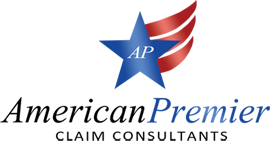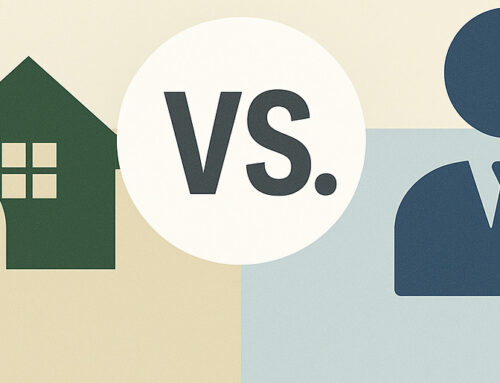When water invades your home, understanding the difference between burst pipe vs. flood damage can mean the difference between a covered claim and devastating out-of-pocket expenses. Florida homeowners face unique water damage risks, from sudden plumbing failures to hurricane-driven flooding, yet many don’t realize their insurance policies treat these scenarios completely differently.
Recent data shows that water damage accounts for nearly 25% of all homeowners insurance claims, but coverage disputes arise when property owners assume all water damage is treated equally. Whether you’re dealing with a catastrophic pipe rupture or storm surge from the Gulf Coast, knowing your coverage limitations before disaster strikes can save you thousands of dollars and months of frustration.
What’s the Difference Between Burst Pipe and Flood Damage?
Burst pipe damage occurs when internal plumbing systems fail suddenly, while flood damage results from external water sources like storms or rising groundwater. This fundamental distinction determines which insurance policy responds to your claim.
Burst Pipe Water Damage Explained
Burst pipe incidents involve your home’s internal plumbing infrastructure—water heaters, supply lines, appliances, and fixture connections. These failures typically happen without warning due to age, pressure fluctuations, or manufacturing defects. In Florida’s climate, temperature swings and high humidity can accelerate pipe deterioration, particularly in older homes.
Common burst pipe scenarios include washing machine hose ruptures, water heater tank failures, and supply line breaks behind walls. The key factor is that water originates from your property’s plumbing system, not from external weather events.
Understanding Flood Damage Classifications
Flood damage involves water entering your property from outside sources. The National Flood Insurance Program (NFIP) defines flooding as temporary inundation of normally dry land by overflow of inland waters, unusual tidal surges, or rapid accumulation of surface runoff.
For Florida residents, this includes hurricane storm surge, river overflow, canal breaches, and even heavy rainfall that exceeds drainage capacity. The critical distinction is that floodwater originates beyond your property boundaries, regardless of whether the event seems “natural” or predictable.
Gray Area Situations
Some water damage scenarios blur the lines between internal and external sources. Sewer backup during storms, foundation seepage during heavy rains, and appliance overflow caused by power outages can trigger coverage disputes. Insurance companies sometimes exploit these ambiguous situations to minimize payouts, making professional claim assistance valuable.


How Does Homeowners Insurance Handle Burst Pipe Claims?
Standard homeowners insurance typically covers sudden and accidental burst pipe damage, including repair costs and personal property replacement. However, coverage has specific limitations and exclusions that Florida homeowners should understand.
What’s Covered Under Standard Policies
Most HO-3 homeowners policies include burst pipe damage under “sudden and accidental discharge” provisions. This coverage extends to structural repairs, damaged personal belongings, and additional living expenses if your home becomes uninhabitable during repairs.
Coverage typically includes wall and flooring replacement, furniture restoration, and temporary housing costs. Your policy will also cover the cost to access and repair the broken pipe, though some insurers limit coverage for the actual plumbing repair itself.
Common Exclusions and Limitations
Homeowners insurance won’t cover gradual leaks, maintenance-related failures, or damage from frozen pipes in unheated areas. If you knew about a plumbing problem but delayed repairs, insurers may deny your claim based on negligence.
Secondary damage like mold growth may have limited coverage, and most policies include specific timeframes for reporting water damage. In Florida’s humid climate, mold can develop within 48-72 hours, making immediate action crucial for both health and coverage reasons.
Florida Flood Insurance: Separate Protection for External Water
Flood insurance is a separate policy required for flood-related water damage, as standard homeowners insurance excludes flood coverage entirely. This separation often surprises Florida residents facing their first major storm.
Why Homeowners Insurance Excludes Floods
Insurance companies classify floods as catastrophic events that could bankrupt individual insurers if covered under standard policies. The federal government stepped in with the National Flood Insurance Program to provide affordable flood protection, but this coverage requires separate purchase and has mandatory waiting periods.
Private flood insurance alternatives have emerged in Florida, often providing broader coverage and higher limits than NFIP policies. However, both options require advance planning—you can’t purchase flood insurance after a storm warning is issued.
Understanding NFIP Coverage Limits
Federal flood insurance provides up to $250,000 for structural damage and $100,000 for personal property, with separate deductibles for each coverage type. The policy covers direct flood damage but excludes items like currency, precious metals, and vehicles.
Unlike homeowners insurance, flood policies typically provide actual cash value rather than replacement cost coverage, meaning depreciation reduces your settlement. This distinction can significantly impact your recovery costs, particularly for older homes and belongings.
Follow us on our Instagram and Facebook pages for additional useful information and updates.
Critical Coverage Gaps Florida Property Owners Face
Sewer and Drain Backup Complications
When storm water overwhelms municipal drainage systems, sewer backup can affect homes miles from traditional flood zones. This damage falls into a coverage gray area where both homeowners and flood insurance may disclaim responsibility.
Sewer backup endorsements on homeowners policies provide some protection, but these additions often have low coverage limits and specific exclusions during storm events. Understanding these limitations helps you make informed decisions about additional coverage options.
Mold and Secondary Damage Issues
Florida’s subtropical climate creates ideal conditions for mold growth after any water intrusion. Both homeowners and flood insurance policies severely limit mold coverage, often capping benefits at $10,000 or less.
Prevention becomes more cost-effective than relying on insurance coverage. Immediate water extraction, dehumidification, and proper drying techniques can prevent mold development and preserve your coverage options.
When Water Damage Claims Get Complicated
Insurance Company Tactics to Watch
Insurance adjusters may attempt to reclassify burst pipe damage as flood damage or vice versa, depending on which classification benefits the company. They might also undervalue repair estimates or pressure you into quick settlements before full damage assessment.
In Florida, insurers sometimes claim that hurricane winds caused roof damage that led to water intrusion, shifting responsibility from flood to homeowners coverage. These determinations significantly impact your out-of-pocket costs and recovery timeline.
How Public Adjusters Protect Your Interests
A public adjuster works exclusively for you, not the insurance company, to ensure fair claim settlements and proper damage assessment. Unlike company adjusters who represent insurer interests, public adjusters advocate solely for policyholders.
Professional adjusters understand Florida building codes, local repair costs, and insurance policy language that homeowners often find confusing. They document damage thoroughly, negotiate with insurers professionally, and can often secure settlements 40-60% higher than initial insurance company offers.
At American Premier Claim Consultants, our certified public adjusters have extensive experience with both burst pipe and flood damage claims throughout Florida. We work on a contingency basis, meaning you pay nothing upfront and our fees come only from improved settlements.
Protecting Your Property: Prevention and Preparation
Burst Pipe Prevention Strategies
Regular plumbing maintenance, including annual inspections and pressure monitoring, can prevent costly failures. Installing water leak detection systems and knowing your main water shut-off location enables a quick response when problems occur.
Consider upgrading older plumbing materials, particularly galvanized steel pipes, common in pre-1980 Florida construction. Modern materials resist corrosion better and often qualify for insurance discounts.
Flood Preparedness Planning
Understanding your flood zone designation helps determine appropriate insurance coverage levels. Even properties outside high-risk zones can flood during severe weather events, making basic flood coverage a wise investment.
Emergency preparedness includes creating evacuation plans, maintaining emergency supplies, and documenting your property’s condition before storm season. These preparations can expedite insurance claims and ensure family safety.
Key Takeaways
- Coverage Distinction: Burst pipe damage (internal plumbing) is covered by homeowners’ insurance; flood damage (external water) requires separate flood insurance
- Immediate Action Required: Both scenarios require immediate water extraction and damage documentation to prevent secondary issues like mold
- Gray Areas Exist: Sewer backup, foundation seepage, and storm-related plumbing failures can create coverage disputes
- Professional Help Matters: Public adjusters can significantly improve settlement outcomes for complex water damage claims
- Prevention Pays: Regular maintenance and proper insurance coverage selection prevent financial devastation
- Time Limits Apply: Both homeowners and flood insurance have strict reporting deadlines that can void coverage
- Documentation is Critical: Thorough damage documentation and professional assessment protect your claim rights
Taking Action After Water Damage
When facing water damage of any type, your immediate response affects both your family’s safety and your insurance recovery. Contact emergency water extraction services first, then document everything with photos and videos before cleanup begins.
Understanding burst pipe vs. flood damage coverage differences empowers you to make informed decisions during stressful situations. However, insurance companies have teams of professionals working to minimize their payouts—shouldn’t you have professional representation too?
Don’t let insurance companies take advantage of your unfamiliarity with policy language and claim procedures. American Premier Claim Consultants provides free consultations to evaluate your water damage situation and explain your coverage options clearly.
Contact us today at 1-844-313-3155 or request help online. Our certified public adjusters are available 24/7 to protect your interests and maximize your insurance recovery. Remember—time limits apply to insurance claims, so don’t delay getting the professional help you deserve.







